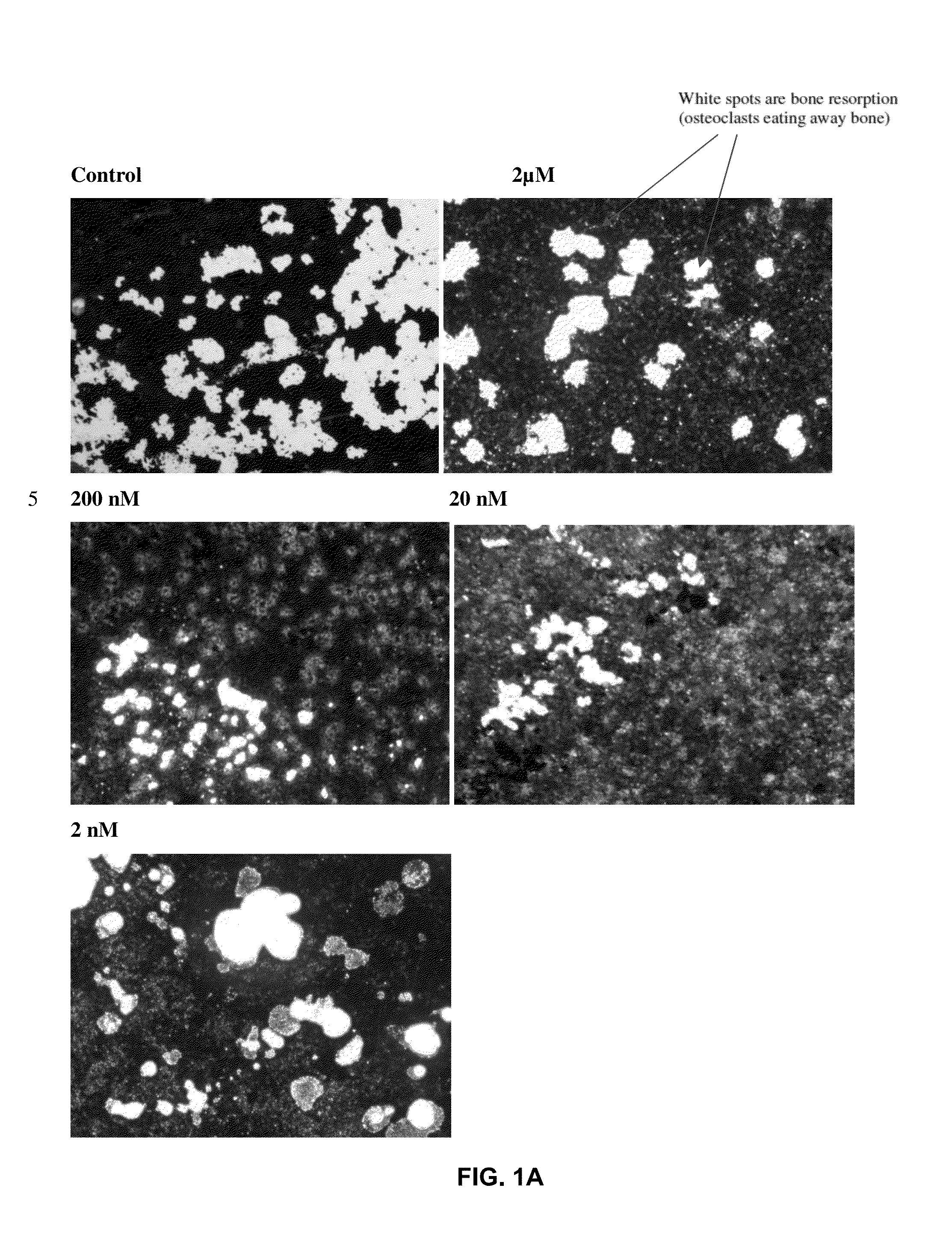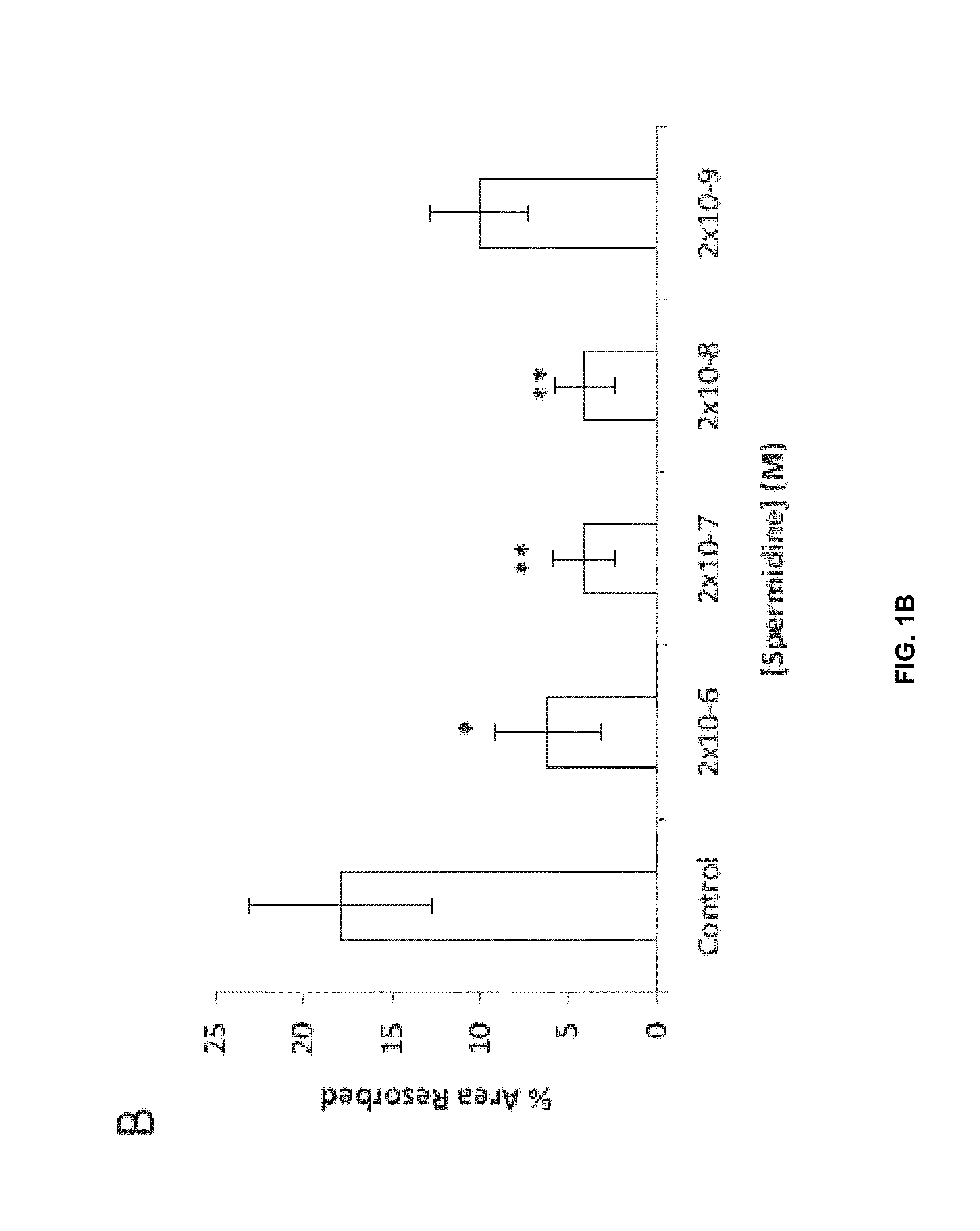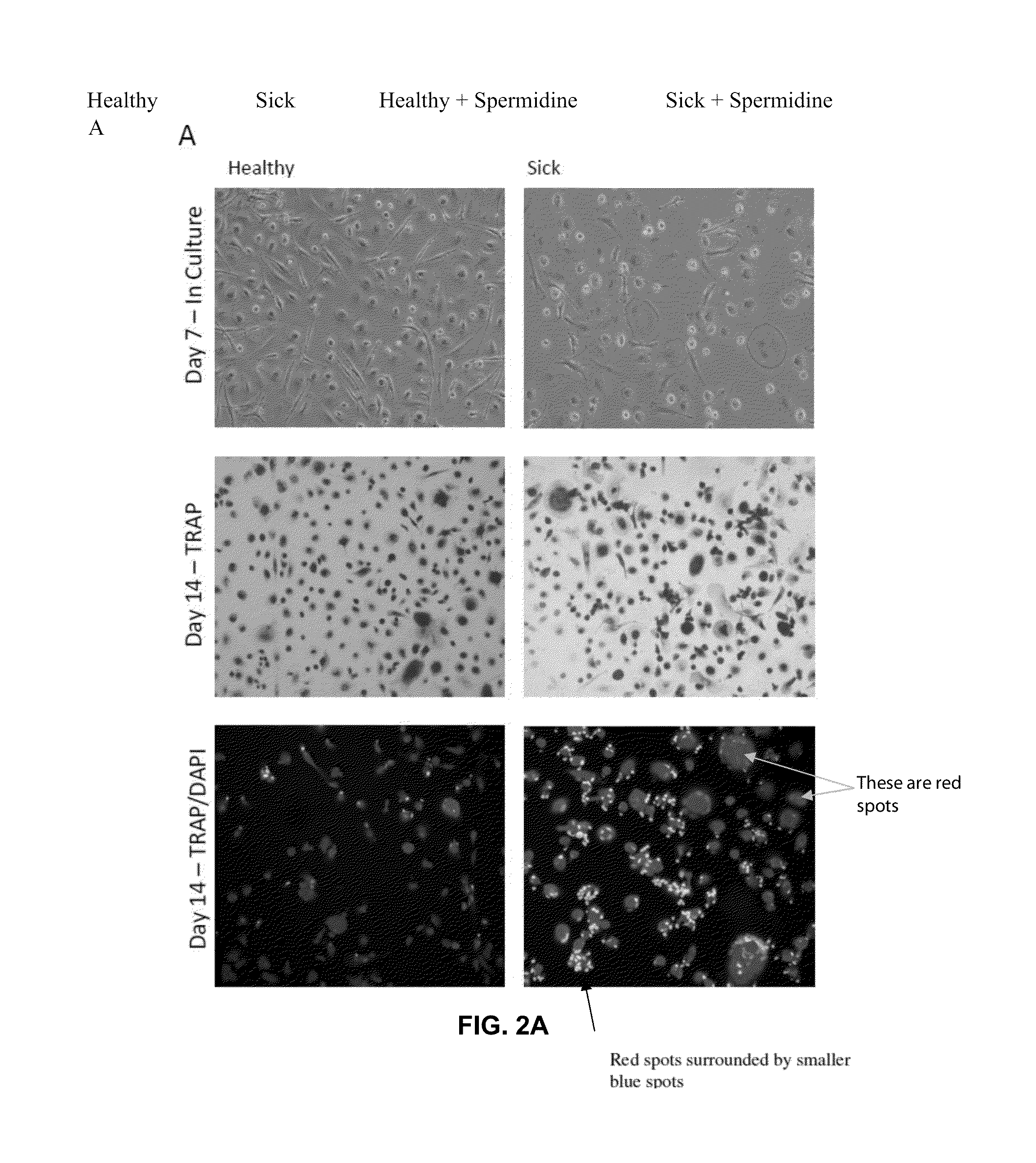Osteoclast activity
a technology of osteoclast and activity, which is applied in the field of new methods of treating metabolic bone diseases, can solve the problems of limited use of estrogen as a treatment, oesophagus and upper gastrointestinal tract, few men agree to this type of therapy, etc., and achieve the effect of increasing the number of bone resorption markers and reducing the number of bone formation markers
- Summary
- Abstract
- Description
- Claims
- Application Information
AI Technical Summary
Benefits of technology
Problems solved by technology
Method used
Image
Examples
example 1
In Vivo Model of Critical Illness
[0066]Animals
[0067]All animals were treated according to the Principles of Laboratory Animal Care formulated by the U.S. National Society for Medical Research and the Guide for the Care and Use of Laboratory Animals prepared by the National Institutes of Health. The study protocol was approved by the Leuven University ethical review board for animal research (P 108 / 2009). The model has been described in detail previously (Weekers F, Giulietti A P, Michalaki M, Coopmans W, Van Herck E, Mathieu C, et al. Metabolic, endocrine, and immune effects of stress hyperglycemia in a rabbit model of prolonged critical illness. Endocrinology. 2003; 144 (12):5329-38.). At day-1, adult, 3- to 4-month-old male New Zealand white rabbits weighing 3 kg were anesthetized and catheters were inserted in the right jugular vein and right carotid artery, allowing intravenous infusion of insulin and fluids and repetitive blood sampling. Fluid resuscitation consisting of hartma...
example 2
In Vitro Model of Bone Resorption During Critical Illness
[0070]Experimental Subjects
[0071]Human peripheral blood was collected from prolonged critically ill patients (n=12, 26-80 years of age, mean age 57±16.39 years of age) and healthy control volunteers, matched for age, sex and body mass index (BMI) (n=12, 23-81 years of age, mean age 57±17.44 years of age). All protocols were approved by the Institutional Review Board of the Leuven University. Written informed consent was obtained from all healthy volunteers and from the patients or, when the patient was unable to give consent, from the closest family member. Prior to sample collection, it was ensured that no steroidal drugs or bisphosphonates had been taken by patients or healthy volunteers in the past 12 months.
[0072]Flow Cytometry
[0073]Osteoclast precursors were detected in healthy volunteers or critically ill patients by staining fresh blood samples with allophycocyanin (APC)-conjugated anti-VNR, phycoerythrin (PE)-conjugate...
example 3
In Vitro Model of Osteoblast Differentiation During Critical Illness
[0078]Cell Culture
[0079]Human Periosteal Derived Cells (hPDCs) were obtained from the Laboratory for Skeletal Development and Joint Disorders, Katholieke Universiteit Leuven, Leuven, Belgium. Cells were expanded in monolayer at 37° C. in a humidified atmosphere of 5% CO2 in growth medium, which consisted of high-glucose Dulbecco's modified Eagle medium (DMEM; Invitrogen, Merelbeke, Belgium) containing 10% γ-irradiated and filtered FBS (Gibco), 1% sodium pyruvate (100 mM; Invitrogen) and 1% antibiotic-antimycotic solution (100 units / ml penicillin, 100 μg / ml streptomycin and 0.25 μg / ml amphotericin B; Invitrogen). The medium was replaced every 3 days. All experiments were carried out with expanded cell populations between passage 5 and 7, with a seeding density of 4500 cells / cm2. After 48 hours in culture, the growth medium of in vitro osteogenic assays was replaced using osteogenic medium, which consisted of FBS-free...
PUM
| Property | Measurement | Unit |
|---|---|---|
| Molar density | aaaaa | aaaaa |
| Molar density | aaaaa | aaaaa |
| Molar density | aaaaa | aaaaa |
Abstract
Description
Claims
Application Information
 Login to View More
Login to View More - R&D
- Intellectual Property
- Life Sciences
- Materials
- Tech Scout
- Unparalleled Data Quality
- Higher Quality Content
- 60% Fewer Hallucinations
Browse by: Latest US Patents, China's latest patents, Technical Efficacy Thesaurus, Application Domain, Technology Topic, Popular Technical Reports.
© 2025 PatSnap. All rights reserved.Legal|Privacy policy|Modern Slavery Act Transparency Statement|Sitemap|About US| Contact US: help@patsnap.com



